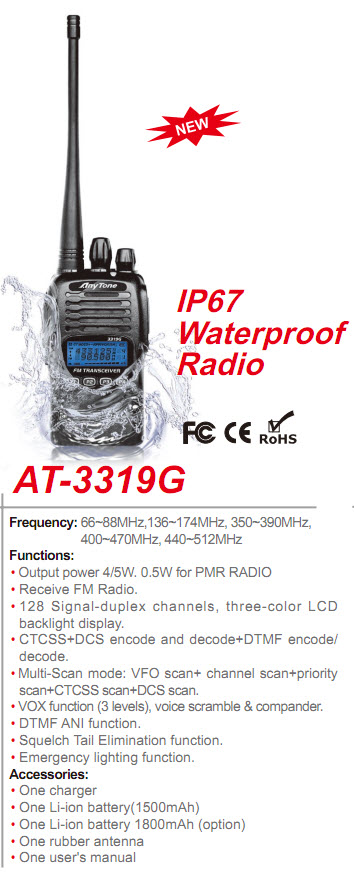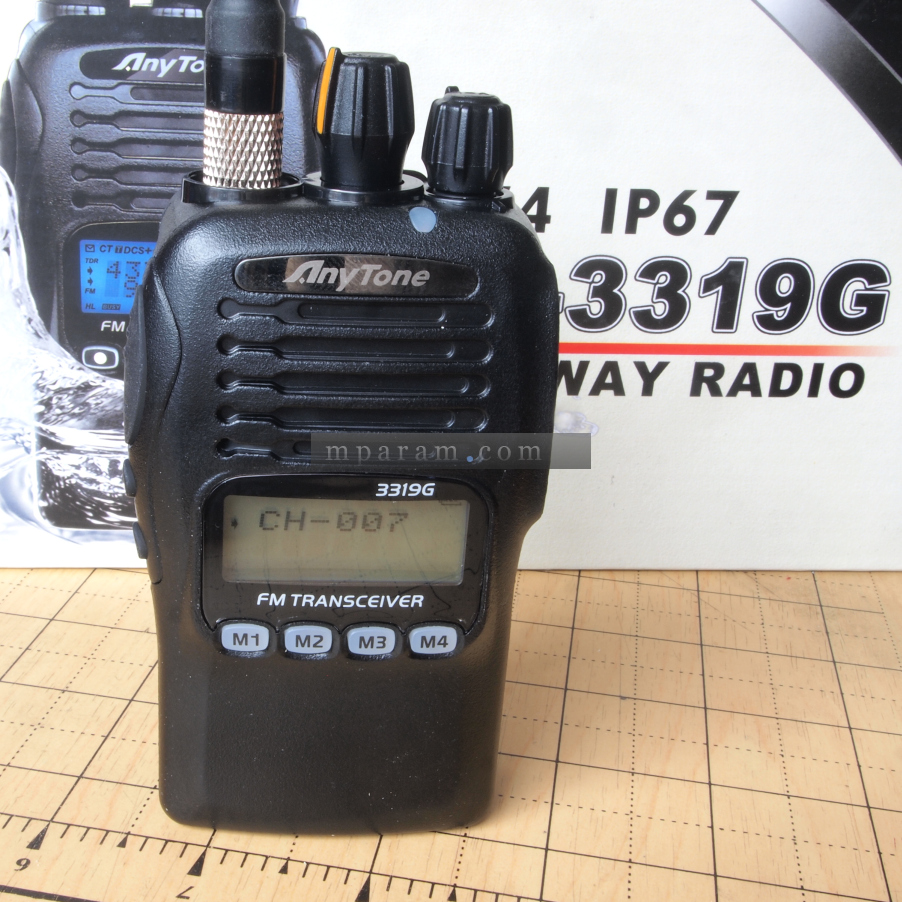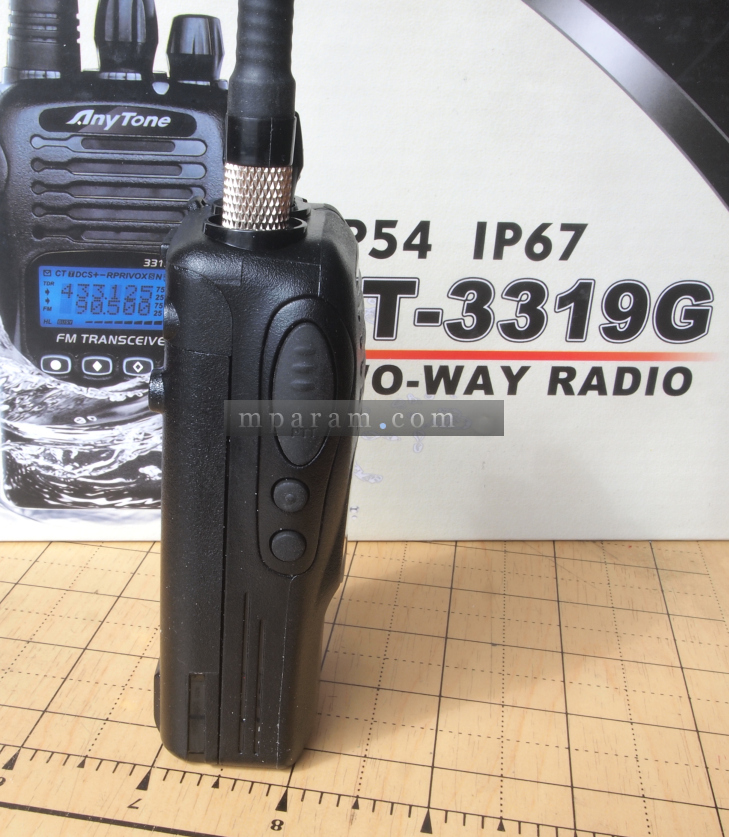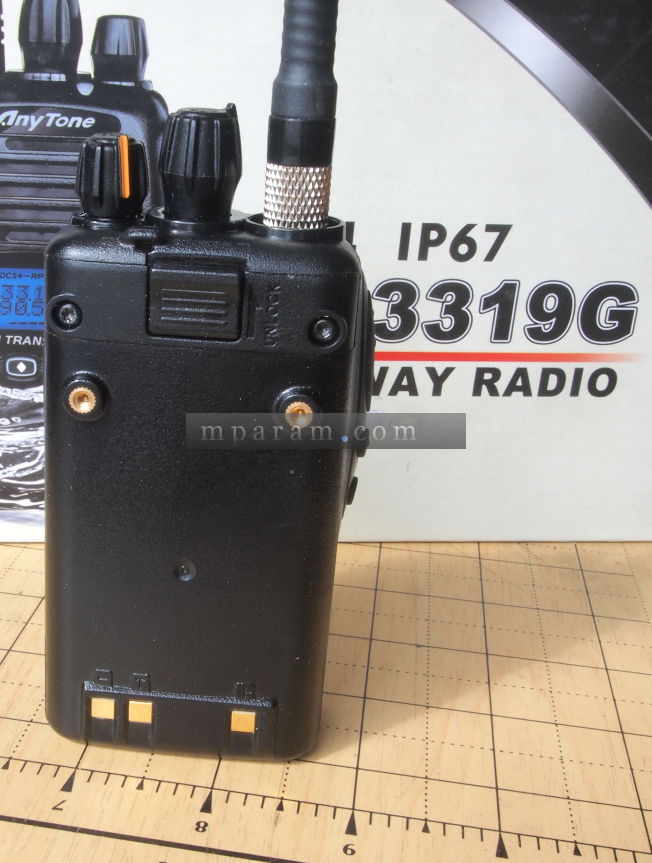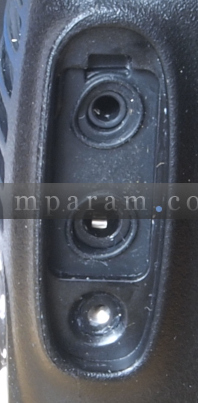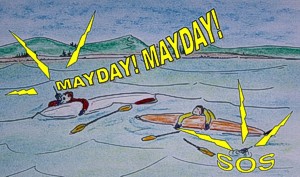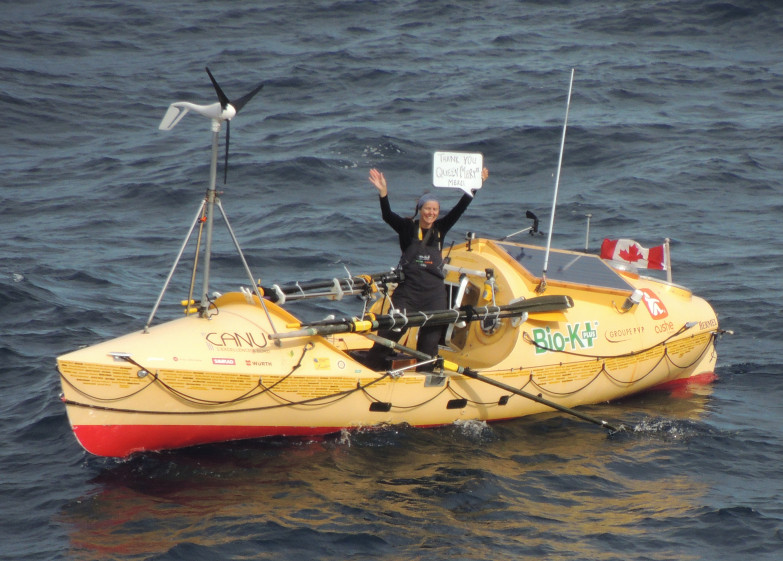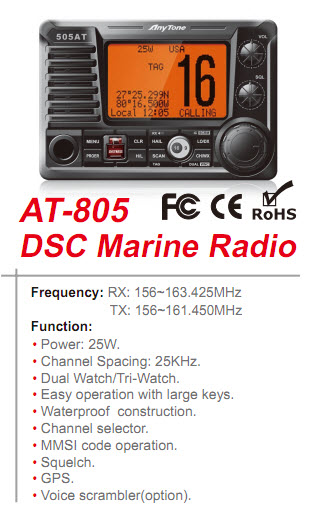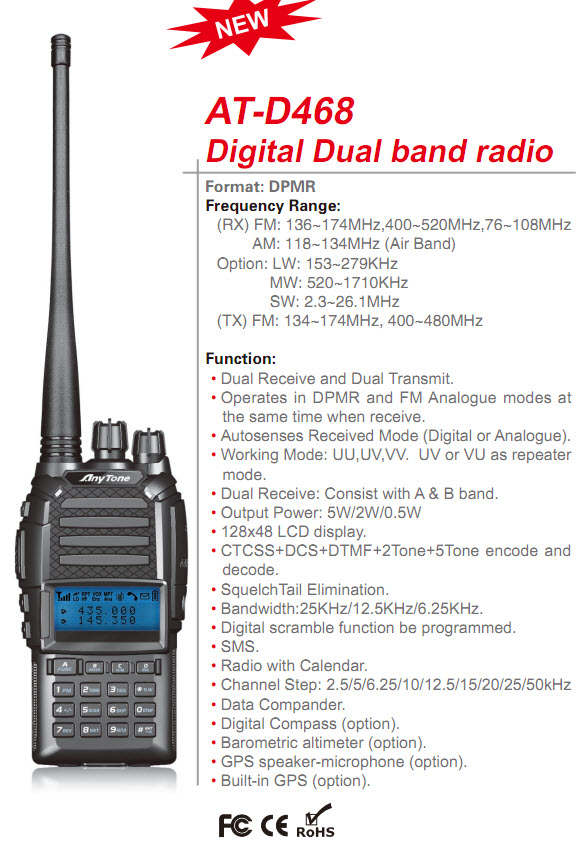VHF Radios:
Anytone AT-3319G: $179.95 USD On Sale: $30.00 Off
We ordered a number of samples of this model sight unseen with our first commercial shipment of the 3318's because we sometimes get kayakers who want a radio like this for kayaking in summer, and skiing in winter. When we unboxed this radio for the first time, we found it to be a nice quality build with appealing form factor and clean ergonomics with a good set of advanced features and price that does not break the Bank. Some more detailed pictures are on the right sidebar.
This radio uses the same charger, batteries, and accessories as the 3318 handheld that we sell because the case is exactly the same, except is does not have the numeric keypad. It achieves its IPX rating at the expense of user convenience. The right side where you connect your microphone and programming cable has a hard rubber cover with a gasket that fits tight to seal the holes (see picture for what it looks like with cover removed, the bottom hole is where the screw goes). It is held in place with a small philips head screw. This means that if you want to remove the cover in the field to plug a speaker Mic in, you'll need to be carrying a jeweler's screwdriver. As for how waterproof it is when the plug is off and Mic is plugged in, the design seems to ensure a "tightish" rubber on rubber press fit when the Mic is plugged in, but as the Mic plug is not screwed down, it would appear that any tugging action on the Mic cord could pull the plug outward enough to allow some water to ingress. Therefore we would guess that with the cover removed this unit would still be fine in rain, and probably OK if you just dropped it into shallow water and retrieved it immediately, but could not be trusted to keep water out when submersed for any length of time (such as sloshing around in the bilge of your kayak).
The operating features are different than the 3318. It has voice prompts. It is a dual band, operating 136-174 and 400-470 mHz. It can encrypt your transmission with a buit in scrambler. It has a 128 Channel capacity, 5W maximum power output. To purchase options, just choose the same as the 3318 options on the order page.
DSC Radios for Kayaking
With a DSC-enabled radio, you can press a distress button and a digital help message with your current GPS coordinates and MMSI registration is sent to the Coast Guard (and other nearby vessels equipped with DSC radios). Within the past several years, DSC has finally started to show up in portable radios—thanks mostly to inexpensive GPS chips. GPS runs your battery down faster but it means that the radio knows its exact position, and Digital Selective Calling enables you to send that position as a MAYDAY transmission by pressing the big red button for 5 seconds. The DSC system has its own frequency, Channel 70, which is only for short digital burst transmissions. It’s a criminal offence to use it for voice transmissions. That’s not a problem if everybody uses a marine VHF radio because if you try to talk on Channel 70, a marine radio will refuse to transmit anything. Anytone has started to produce some DSC capable handheld radios that we thought we should make available if there is any interest, and we're waiting for them to get back to us with availability and pricing.
Guide to Marine Channels
X indicates a pleasure boat may use the channel on the left in the maritime region at the top.
PC=Pacific coast, WA=West Arctic, Athabasca-Mackenzie, PR=Prairie
Provinces, LW=Lake Winnipeg, Red River, EA=Eastern Arctic, GL=Great
Lakes, NL=Newfoundland & Labrador, AC=Atlantic Coast.
A after a channel is for U.S. mode. B is International mode, normally used in Canada.
Channel
PC
WA
PR
LW
EA
GL
NL
AC
Canadian Usage
06
Primary working channel - all regions
09
Working channel Pacific Region
10
X
X
Ship movement, Search & Rescue
11
X
X
X
Ship movement, Pilotage, Victoria VTS
12
X
X
X
X
Port Operations, SM, Vancouver VTS
13
X
X
X
X
X
X
X
X
Bridge-to-bridge (hail ships);
Great Lakes navigation safety (1watt)
14
X
X
Port Operations
15
X
X
X
X
X
X
1 Watt only, EPIRB buoy
16
ONLY for emergency and calling - all
regions
17
X
X
X
X
X
X
1 Watt only, Pilotage
18A
Victoria, B.C. Port Operations
22A
X
X
X
X
X
X
X
Calling Canadian Coast Guard
65A
X
Great Lakes SAR, MARBs, Pollution
66A
X
Calling B.C. marinas
67
X
X
X
X
68
Primary working channel - all regions
X
X
X
X
X
X
X
Calling marinas
69
X
X
X
X
71
*
X
X
X
X
Intership only, *Comox VTS only
72
X
Pacific Region
73
X
X
X
X
(B.C. marinas now use 66A)
74
X
X
X
X
X
SM, Victoria/Fraser/Tofino VTS
83A
X
Calling Coast Guard in B.C. (2007)
Channel
PC
WA
PR
LW
EA
GL
NL
AC
Canadian Usage
U.S. Channel
Usage in U.S. waters
16
Calling, Distress, and Safety
09
Calling
68, 69, 71, 72, 78
Recreational use
24-28, 84-87
Marine Operator
13
Locks, canals, bridges, pilots
66
Calling Pacific marinas
70
DSC (Digital Selective Calling) only

